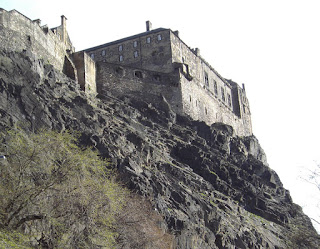 |
| Edinburgh Castle |
You must assess before you teach. If you don't know where a person is in their learning you can't personalise their teaching. Much of what you do teach will be wasted. Your students won't end up where you want them to. Some will get very lost indeed!
| MRI scanner |
By and large education retains the pencil and paper test. These give next to useless information. I attended a parents' evening where the Maths teacher was armed with a formidable array of numbers about my stepdaughters' Maths. What do the numbers mean? I asked. She wasn't very good at Maths. Which bit of Maths? I asked. Maths generally, I was told. What does she need to do to improve? I asked. Try harder and ask for help, I was told.
At least the Maths teacher had tried. Most of the teachers that evening had measured nothing and simply spoke in platitudes. I can't imagine a doctor giving me such vague replies.
So my utopian vision for the future of education is to use technology to improve our diagnostic assessment.
No comments:
Post a Comment